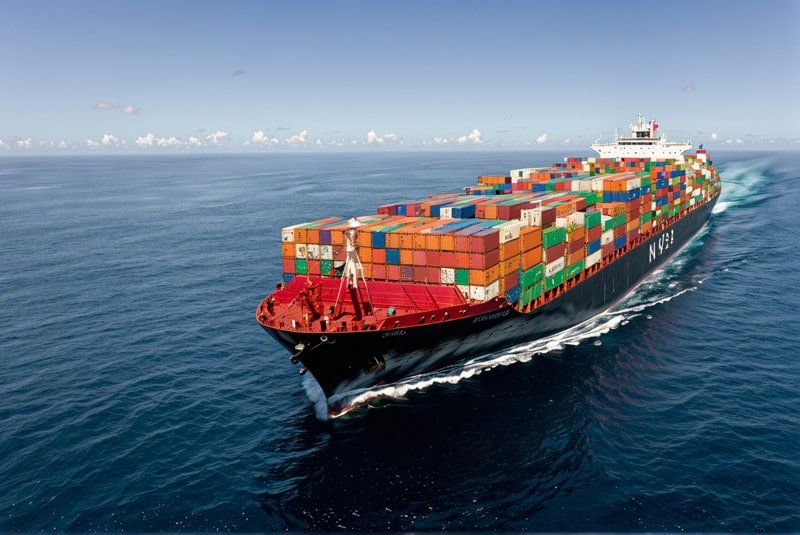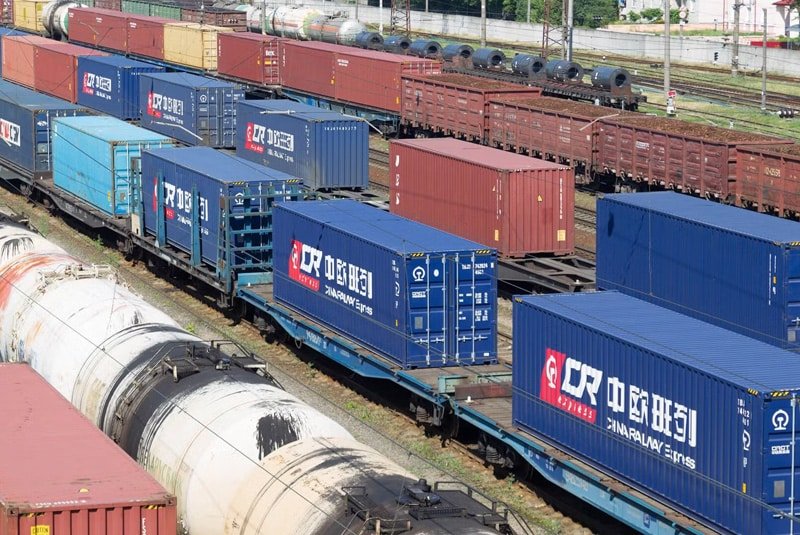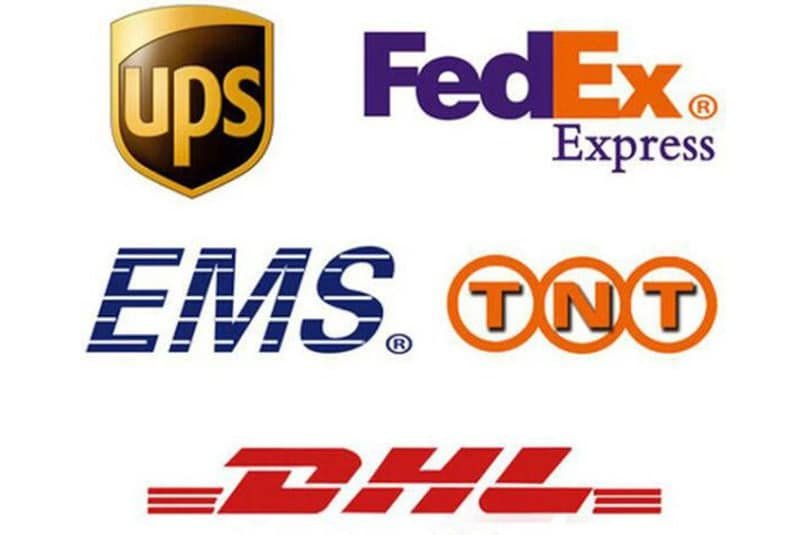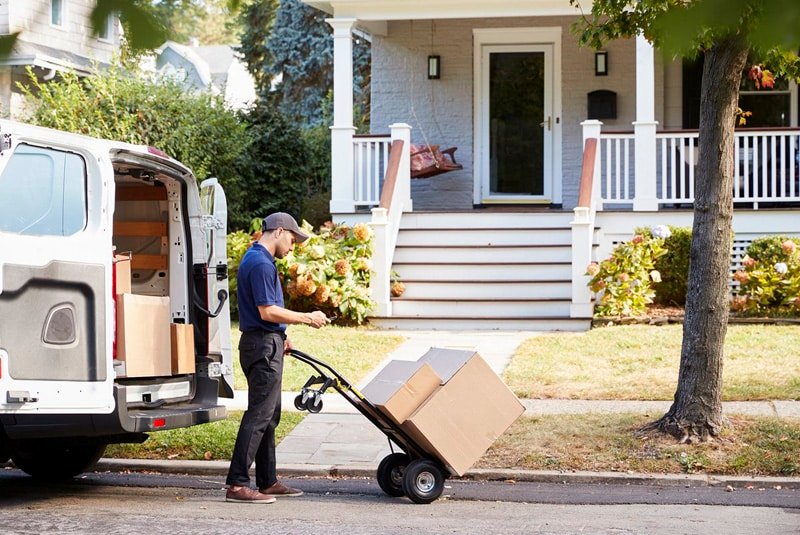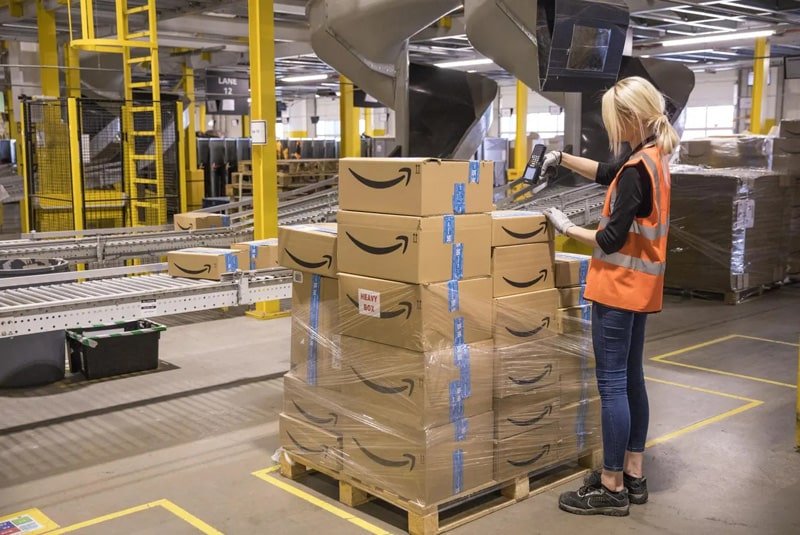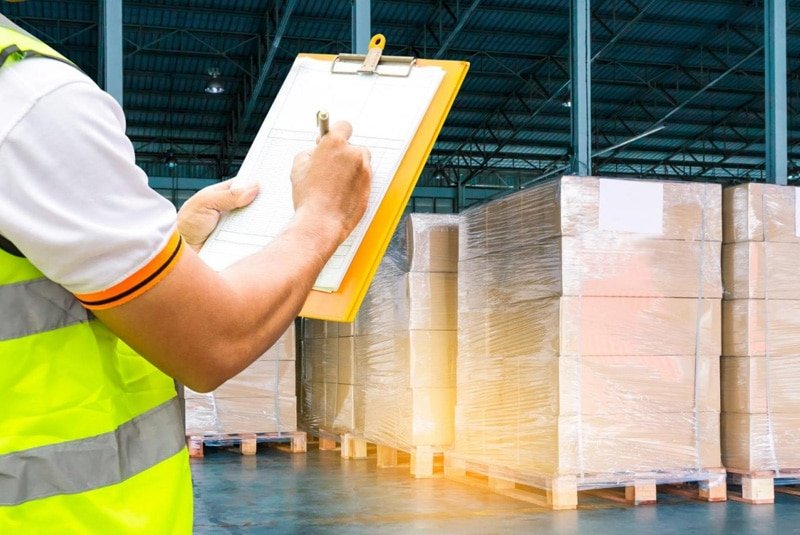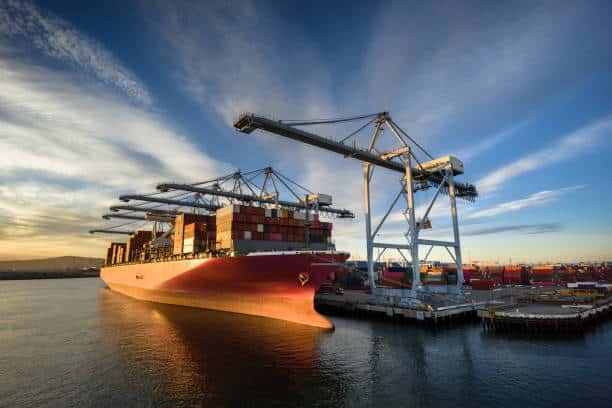GWT Worldwide provides effective transportation from China to Japan using air freight, regular sea freight and express shipping. A reliable logistics company that dwells with freight forwarding, customs processing and supply chain management for businesses of any size.
Reliable Logistics Solutions Across East Asia
The company is experienced in ensuring China-to-Japan shipments are executed efficiently with lower costs. Thanks to our operations in both nations and deep knowledge of East Asian shipping networks, we help companies move their goods freely using air freight, sea freight and express services.
Our China to Japan Shipping Services
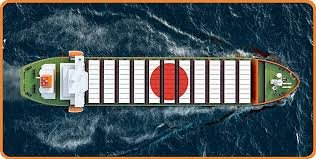
Air Freight
- Rapid transit times are 1-2 days.
- This method is suitable for goods that need to arrive fast, expensive products, perishables and time-dependent deliveries
- Every day, there are many flights leaving from Beijing, Shanghai, Guangzhou and Shenzhen.
- You can fly to Japan through airports in Tokyo (Narita and Haneda), Osaka, Nagoya or Fukuoka.
- The company offers the following services: economy, standard or priority.
Sea Freight
- Economical Solution is for when you are sending a big shipment.
- You can choose between shipping using a Full Container (FCL) and less than a Container (LCL).
- Shipping duration: 3-7 days which depends on where the ports are located
- Many weekly departures are offered from all the major Chinese ports.
- Yokohama, Tokyo, Osaka, Kobe, Nagoya and Hakata are some of the main tourist cities in Japan.
- The company uses temperature-controlled containers for specific goods.
Express Shipping
- From start to finish, the delivery process covers addresses in China to those in Japan
- The delivery process takes 1-3 days across the whole country.
- Monitoring: Keeping an eye on where your shipment is in real time
- They Transport Items of 0.5kg to 300kg Facebook Modified
- All Japanese prefectures are covered by the data.
- With simplified customs procedures, it is now easier to handle documentation.
Value-Added Services
- Japan Customs Clearing: We handle all the parts of Japan’s customs process for you.
- In China and Japan, there are warehouses used for storage.
- Your valuable shipments are completely covered with Cargo Insurance.
- Consolidation helps by merging different shipments for better pricing.
- Transportation from distribution centers to final destinations everywhere in Japan
- Careful handling is provided for electronics, dangerous goods and large cargo.
- Support for Japanese Documentation: Help with meeting the requirements of the Japanese language
- Management of returning goods from Japan to China
Why Choose GWT Worldwide for China-Japan Shipping?
- Knowledge of the regulations and trading routes used in East Asia
- Built-up Network: Strong connections with carriers and representatives in each country
- Choose Direct Mode to have carriers give us the least expensive fares.
- Using Chinese, Japanese and English, we offer support to our students.
- It is important to know how things are done in both countries for business.
- Focus on Compliance: Finding out all the strict import regulations.
- Tracking and shipment systems that use the latest technology
- Account Management prioritizes you by helping you with your needs.
About GWT Worldwide
GWT Worldwide offers logistics services that assist with global freight forwarding, solutions in supply chains and cross-border arrangements for e-commerce. Being strong in both China’s and global markets, we ensure businesses worldwide get reliable, low-cost customized logistics services.
Basic services offered by our organization are:
- Shipping through air and shipping through sea are both available.
- Shipping through air and shipping through sea are both available.
- China–Europe Rail Line
- International Express & Courier Solutions helps companies ship their products around the globe.
- Customs Clearance and Warehousing
- Amazon FBA helps with all aspects of shipping and labeling your items.
Efficiency, transparency and making our customers happy are our main priorities at GWT Worldwide. Thanks to advanced technology and the help of reliable partners worldwide, we ensure your shipments reach their destinations safely, on time and follow all the regulations. When it comes to your trade operations, GWT Worldwide is the best choice for hassle-free door-to-door logistics.
Contact Us
Want to arrange the most efficient China to Japan shipping? If you want guidance on shipping for your business, reach out to our logistics experts for a suitable quote and plan.
GWT Worldwide helps businesses in China and Japan with effective and dependable logistics.
Freight Shipping Cost from China to Japan
Overview of Costs by Shipping Mode
Here’s a breakdown of estimated freight rates from China to Japan for May 2025:
| Shipping Mode | Cost (USD) | Coverage / Notes |
| Sea Freight (FCL 20-foot) | $340 | To Tokyo, Yokohama, and Kobe |
| Sea Freight (FCL 40-foot) | $600 | To Tokyo, Yokohama, and Kobe |
| Air Freight | $2.30 per kg | For loads over 1,000 kg, mainly to Tokyo |
If choosing, the type of shipping is important to consider is dependent on the weight, size and time needed for delivery.
Estimating Shipping Costs and Effective Budgeting
For effective budgeting, keep in mind the important parts of your costs.
- Fuel Surcharges: The rates may change because of changes in oil prices worldwide.
- Your product might be affected by customs duties which vary depending on what you declare and its type.
- On Charges: Don’t forget to mention and charge for ports and documents.
Budgeting Tips:
- Lorry your containers wherever possible, as this makes use of your container capacity.
- Look for factors that can affect fuel costs during each season.
- Estimate delivery times and expenses correctly to handle your budget and meet deadlines.
If you prepare well, you can avoid unplanned costs and shipping goods from China to Japan will be easier.
Understanding Import Tax and Duties
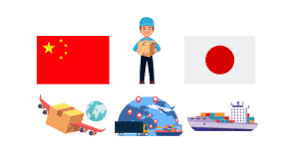
Impact of Import Taxes on Overall Shipping Costs
Shipping fees may increase due to the levying of charges like import duties and taxes. These are necessary to know for effective price setting and planning.
Key Components:
- According to Japan’s rules, a 10% VAT is charged on the CIF value (price with shipping, insurance and other fees).
- The level of Customs Duties depends on the corresponding HS codes. Different products have different rates, for example, electronics are charged less than luxury ones.
- The base for duties and taxes is the total shipping value including both the price of the goods and any insurance.
Example:
If the value of the electronic goods is $10,000 and the shipping/insurance costs $1,000.
- Total in the CIF is $11,000.
- The duty fees account for 3% of the total value or $330.
- The VAT (10%): $1,100
- You will have to pay a total of $1,430 in taxes.
You should add these expenses to your overall import budget.
Navigating Legal Compliance in International Shipping
Following the import regulations in Japan is very important. To avoid late and additional charges, ensure you are focused on the following items.
- It is important to apply the right HS Code for every product.
- It’s important to provide true value information since misreporting can cause penalties or greater duties.
- Keep Japanese safety, health and environment standards in mind when you develop.
Things That Help Speed Up Customs Processing:
- Check whether you can utilize the latest documentation tools.
- Make sure you use customs brokers who have experience dealing with Japan’s customs procedures.
- Be informed about any new rules being applied to their trade policies.
The practices minimize difficulties in transit and make logistics work more efficiently.
Streamlining Customs Clearance
To cut the time it takes to clear customs from China to Japan.
- Declare the items with the right HS code and state their real values.
- Have all the papers ready beforehand and review them for possible mistakes.
- Team up with a custom broker who is well-versed in the Japan import regulations.
- Take advantage of technology to speed up how you handle documentation.
- Be aware of changes made in regulations and trade policies.
Using these steps cuts down on delays and guarantees a smooth way for goods to enter the country.
Shipping from China to Japan: Transit Times
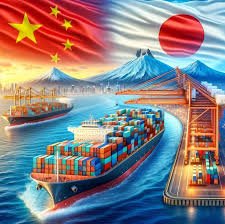
Transit Times by Shipping Mode
Distance and mode of transportation determine how much time shipping from China to Japan will take.
| Shipping Mode | Description | Transit Time |
| Sea Freight (FCL/LCL) | Depends on route and container load | 2 to 4 weeks |
| Air Freight | Best for urgent cargo | 1 to 3 days |
| Express Shipping | Good balance of speed and price | 3 to 5 days |
If something is required quickly for an event, you can count on air freight to get it to you fast.
Mitigating Factors Affecting Transit Times
Different external aspects can delay the time of receipt.
- Sudden weather conditions can cause all types of transport to be postponed.
- Too many containers at the port cause delays while shifting containers.
- Errors or things being missing from the imported documents can cause issues in getting the goods cleared.
Strategies to Mitigate Delays
- Go for freight forwarders that have a positive history of doing well.
- Go over the customs documents again to ensure they are accurate.
- Be able to change delivery dates as needed.
If you look out for possible issues, you will have better and prompt delivery of your goods.
Door to Door Shipping from China to Japan
Advantages of Door-to-Door Services
- Streamlined Logistics
Looks after the transportation from China to Japan, so there are no unnecessary middlemen or extra documents. - Minimal Handling
Moving your goods less often helps cut down damage and loss risk which is good for fragile or high-value goods. - Overall Cost Efficiency
Upfront charges are usually intended to deal with the extra expenses that are not included in the main freight rate.
Electronics delivered at the customer’s door are safe and convenient, making customers satisfied and lowering the chances of claims.
Choosing the Right Door-to-Door Service
When considering a provider (such as Guanwutong), look at the following factors:
| Factor | What to Check |
| Reliability | Proven on‑time delivery and positive client reviews |
| Pricing | Clear rates with no hidden fees |
| Geographic Coverage | Full support from supplier’s door to recipient’s address |
| Customs Expertise | In‑depth knowledge of China–Japan import regulations |
Sea Freight from China to Japan
Benefits of LCL and FCL Shipping
| Container Type | Cost (USD) | Transit Time | Best Use |
| 20‑foot FCL | $340 | 10–15 days | Full loads of bulk or heavy items |
| 40‑foot FCL | $600 | 10–15 days | High‑volume shipments |
Why Sea Freight?
- Effective: Paying little for each unit of product bought in bulk
- People know when to expect a sailing because of the regular schedules.
- They are safe: Goods are well guarded during transit.
Benefits of LCL Shipping
- Saving Money when Moving Less
- You only pay for how much space you require, not for the whole container.
- Flexible Shipments
- LTL is suitable if you want to ship small or occasional loads and do not have a full container.
- Frequent Sailings
- Consolidation causes services to be done more regularly which shortens the duration people have to wait.
- Less money is needed to cover inventory.
- Supply a small batch soon after it is needed and release the space from the warehouse.
Benefits of FCL Shipping
- Less likely to Suffer Damage
- Everything you ship is contained in just one container which reduces handling during transport.
- Regular and On-time Services
- Loading and unloading at the same location helps make the schedule more steady.
- This method is cost-saving for those who produce in high volumes.
- Shipping per unit works best if your goods come to nearly or over the fill lines of a container.
- Enhanced Security
- Access to the container can be granted to you or your agent by seal, avoiding chances to be stolen.
Selecting a Sea Freight Forwarder and Top Shipping Routes
- Getting between Shanghai and Yokohama takes between 7 and 10 days; going from Ningbo to Tokyo; and from Guangzhou to Osaka.
- Before signing a contract, make sure you review all the fees included in the port, handling and documentation and compare the prices provided by different companies.
- Good China–Japan customs knowledge is necessary from your forwarder to avoid shipment delays.
Air Freight from China to Japan
Advantages and Considerations of Air Freight
| Aspect | Detail |
| Cost | $2.30 per kg (shipments ≥1,000 kg) |
| Speed | 1–3 days delivery |
| Ideal For | Urgent, high‑value, or perishable items |
| Pros | Fast transit, minimal handling |
| Cons | Higher cost than sea freight |
Key Points
- If time runs out, Rapid offers solutions fast.
- Reliable: Frequent flights gives less chance of missing your flight.
- Secure: When the cargo is not handled too much, it is safer.
Choosing the Right Air Freight Forwarder
- Network Reach: The airline offers many routes to account for unexpected delays.
- Essential information about Chinese and Japanese import and export laws.
- Equal fees with how quick you will reach your destination and what kind of experience you get.
Use information from their experience, reviews left by clients and their expertise with certain cargo types to make the right choice from the forwarders.
China’s Principal airports
- Beijing’s main international airport is called Beijing Capital International Airport (PEK).
- Shanghai Pudong International Airport (PVG) serves as the top hub for cargo and the trade sector.
- The Baiyun International Airport in Guangzhou (CAN) mainly deals with high volumes of cargo, with many connections available.
- Shenzhen Bao’an International Airport (SZX) is becoming a fast-growing hub for air freight.
- Chengdu Shuangliu International Airport (CTU) is the main logistics center in the region.
Japan’s Principal airports
- NRT, the Narita International Airport, is Tokyo’s greatest hub for international cargo transport.
- Haneda Airport (HND) is where most of Tokyo’s business and cargo flights take place.
- Kansai International Airport (KIX) is the main airport for western Japan.
- NGO – This airport serves the central Japan region for logistics purposes.
- Fukuoka Airport (FUK) is the main airport for flights in southern Japan.
Express Shipping from China to Japan
Benefits and Use Cases for Express Shipping
| Shipping Feature | Description | Estimate |
| Express Shipping Costs | Rate per kilogram for fast delivery | $5–$8 per kg |
| Transit Time | Delivery window | 24–48 hours |
| DDP (Delivered Duty Paid) | All fees included (taxes, duties) | Varies—usually higher |
- Delivery happens in just 1–2 days. This type of shipment is best for items that must be delivered fast and fresh.
- This point helps when business suddenly needs more manpower and workers need things fast.
- Secure the shipment and lessen risk of harm to expensive goods.
- Flight-tracking is available in real-time and other schedules are reliable as well.
Example: A tech firm might use express service—such as Guanwutong—to rush prototypes for a product launch.
Understanding Costs and Transit Times, Including DDP Options
- Costs for wood vary from $5–$8 per kg depending on the amount and weight ordered.
- Eligible shipments will generally take between 24to 48 hours from pick-up to arrival at their destination.
- DDP means you pay only one fee for all your duties and charges. Import problems are avoided and customers can gain faster access to their goods.
When you select DDP Express, you are able to give customers a smooth shopping experience and improve your competitiveness.
Key Ports in China and Japan for Shipping
Major Chinese Ports for Exports to Japan
- Shanghai is known as the container port with the highest level of infrastructure.
- Shenzhen is right beside Hong Kong and carries many electronics and tech items.
- In Guangzhou, there are many companies that focus on auto parts and heavy machinery.
Major Japanese Ports for Imports from China
- Food, electronics and different goods are handled here. The city is well connected with other major industrial centers.
- Resilience and advanced logistics are what Kobe is famous for.
- In Japan, the auto sector focuses on Nagoya because of its ideal supplies of parts and raw materials.
Freight Forwarders from China to Japan
Role of Freight Forwarders in the Shipping Process
- Logistics Management: Supervise the process of collecting, moving and handing over deliveries.
- Be prepared with the required paperwork and cover any payments to the government to avoid causing delays.
- Update your customers in real time about their cargos.
Selecting the Right Freight Forwarder for Your Needs
- Choosing the fitting freight forwarder for you is important.
- Expertise gained from experience traveling on the China–Japan route.
- Have valuable and strong relationships with carriers and agents.
- Services include: storage in the warehouse, combining multiple shipments and the use of several transportation types.
- Reputation: Look at what reviews and support say about the company..
If the products you have are perishable, make certain the forwarder is experienced with cold-chain transport.
How to Ship from China to Japan: A Step-by-Step Guide
Preparing Your Shipment: Documentation, Packaging, and Labeling
- Set up Documents: These are the commercial invoice, packing list and bill of lading.
- Put electronics in durable containers, cushion them and use anti-static materials to protect them.
- Make sure to clearly mark each batch with where it is from, what is inside and the right way to handle it.
- Managing Your Shipment and Following Its Status
Navigating Customs and Tracking Your Shipment
Give the exact number for your item’s value and the correct HS code to avoid delays.
Forwarder or courier tracking tools should be used to keep an eye on the parcel’s progress.
Alibaba and Shipping: Streamlining the Process
Leveraging Alibaba for Efficient LCL, FCL, and Door-to-Door Shipping
- If you have a small shipment, use LCL and if it’s a whole container, go for FCL.
- Use Alibaba’s list of checked and approved suppliers and carriers.
- Door-to-door options include everything from making the goods in a factory until they arrive at your door.
Tips for Reducing Costs and Enhancing Efficiency through Alibaba
- Choose the Ideal Mode: For low volumes, pick LCL and for large volumes, choose FCL.
- Compare Supplier Reviews to Obtain Lower Costs
- Take advantage of the tracking service and Trade Assurance offered by Alibaba.
- Organize your shipments so that each container has more goods.
Doing these things will make your supplies leave China for Japan faster, more efficiently and at a reduced price.
Conclusion
China-Japan shipping is quick, safe, and highly serviced by several transport modes such as air freight, sea freight, and express shipment. Express and air freight are suitable for critical or valuable cargoes with short transit times between the two nations. Sea freight is the most cost-effective option for bulk cargo, especially FCL and LCL services.
By selecting the right shipping option and aligning with a seasoned freight forwarder, companies can gain cost-effective, timely, and effective delivery from China to Japan and facilitate seamless cross-border trade.

